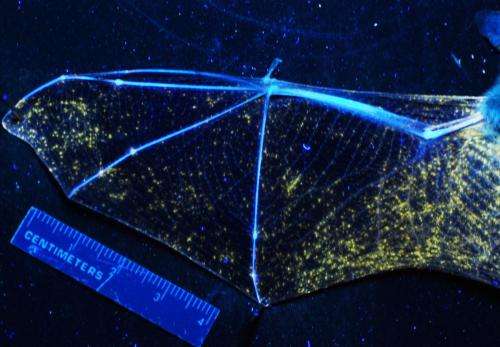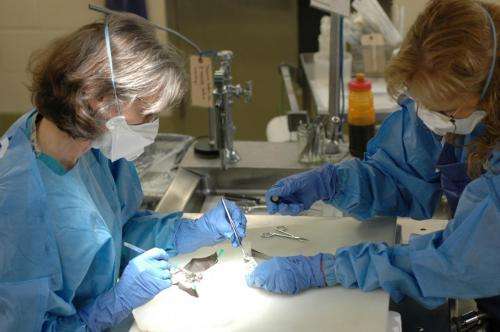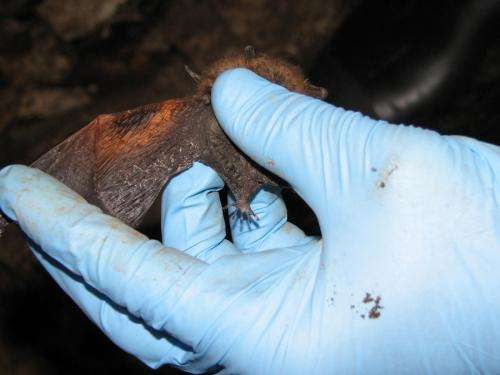How does white-nose syndrome kill bats?

For the first time, scientists have developed a detailed explanation of how white-nose syndrome (WNS) is killing millions of bats in North America, according to a new study by the U.S. Geological Survey and the University of Wisconsin. The scientists created a model for how the disease progresses from initial infection to death in bats during hibernation.
"This model is exciting for us, because we now have a framework for understanding how the disease functions within a bat," said University of Wisconsin and USGS National Wildlife Health Center scientist Michelle Verant, the lead author of the study. "The mechanisms detailed in this model will be critical for properly timed and effective disease mitigation strategies."
Scientists hypothesized that WNS, caused by the fungus Pseudogymnoascus destructans, makes bats die by increasing the amount of energy they use during winter hibernation. Bats must carefully ration their energy supply during this time to survive without eating until spring. If they use up their limited energy reserves too quickly, they can die.
The USGS tested the energy depletion hypothesis by measuring the amounts of energy used by infected and healthy bats hibernating under similar conditions. They found that bats with WNS used twice as much energy as healthy bats during hibernation and had potentially life-threatening physiologic imbalances that could inhibit normal body functions.
Scientists also found that these effects started before there was severe damage to the wings of the bats and before the disease caused increased activity levels in the hibernating bats.

"Clinical signs are not the start of the disease—they likely reflect more advanced disease stages," Verant said. "This finding is important because much of our attention previously was directed toward what we now know to be bats in later stages of the disease, when we observe visible fungal infections and behavioral changes."
Key findings of the study include:
- Bats infected with P. destructans had higher proportions of lean tissue to fat mass at the end of the experiment compared to the non-infected bats. This finding means that bats with WNS used twice as much fat as healthy control bats over the same hibernation period. The amount of energy they used was also higher than what is expected for normal healthy hibernating little brown bats.
- Bats with mild wing damage had elevated levels of dissolved carbon dioxide in their blood resulting in acidification and pH imbalances throughout their bodies. They also had high potassium levels, which can inhibit normal heart function.

More information: The study, "White-nose syndrome initiates a cascade of physiologic disturbances in the hibernating bat host," is published in BMC Physiology: www.biomedcentral.com/1472-6793/14/10
Provided by United States Geological Survey




















